By Phil Curtis
That children are children everywhere, and seem to share innate characteristics that bond them to each other and make them endearing to adults, is one of the more gratifying things to emerge from our 10 days visiting Lewa and some of its surrounding communities. This trip has been a transformative experience in many respects – from the wildlife which Anne and John have already documented so well (although it’s hard to comprehend how close the animals are until you actually experience it, and there’s always something new for you who haven’t yet visited: the five-cheetah charge on a gazelle was a first), to the days spent with Maasai and Samburu warriors, the open-air market in Meru and the always breathtaking Lewa scenery – but a major highlight was our visit to the MCK N’tumbri School about 7-8 km outside the Lewa gates.
The school has 320 students in grades 1-8, and most of those in grades four and above are boarding students. In many respects, the differences between MCK N’tumbri School and an American primary/middle school couldn’t be more stark: dirt everywhere that there isn’t a building, classrooms that lack electricity, no computers anywhere, outdoor latrines for everyone, huge (50-60 student) classes, no choice for lunch (you get one of the Kenyan staples with meat twice a week and are happy for it), and make-shift instructional materials like learning English from old magazines – and everyone has a different magazine. But underneath the appearance of deprivation is an infectious spirit, enthusiasm, friendliness and curiosity that is both heartwarming and reason for optimism.
Leslie, Kate and I spent almost four hours there, primarily visiting the seventh and eighth grade classrooms but also watching most of the kids on the dirt playground and common areas. We didn’t merely visit the classrooms, we were the day’s lesson. Leslie and Kate took one classroom and I the other, and we swapped after a lunch which was delayed by about 40 minutes because the kids couldn’t get enough of Leslie and Kate – particularly Kate. While there have been other adult mazungus who have visited, it is safe to say that Kate is the first white girl of their age (13 for Grade 8) to have made an appearance.
In each classroom we gave brief introductions about ourselves and then opened the discussion for questions. We were besieged: the kids wanted to know about everything. What was our political system like, what were impediments to economic development, what was our climate and what crops did we grow, how many livestock did we (personally) have, what was my advice for kids wanting to be lawyers, and did Kate know Miley Cyrus – among many other interesting and probing questions. In turn, I put the kids on the spot: told them to stand straight, project their voices, speak forward rather than at the ground (apparently a characteristic of middle-schoolers worldwide), and when they ran out Leslie asked questions of them which they enthusiastically answered.
The kids happily encroached on their lunch, and nobody left when school was over at 3:10. At that point the three of us were in the eighth grade class and the students congregated around Leslie and Kate as soon as they were released from their desks. Kate was surrounded by a group of mostly girls who asked one question after another and were fascinated by the responses. We never felt like we were on display or were simply a curiosity, although our visit was undeniably unusual. The atmosphere was comfortable, enthusiastic, appreciative and lots of fun. When class finally let out, the headmaster led us on a quick tour of the premises. Spotting a group of kids playing on the yard, Leslie slipped away from the tour and sent a student to fetch Kate. I finished alone with the headmaster and returned to the playground to find Leslie and Kate engaged in a game which appeared to be a combination of dodgeball and monkey-in-the-middle. They were in the middle.
Elsewhere, kids were doing what kids do after school: kicking and throwing balls (home-made), running around, playing games, laughing and collecting in groups. Yes the playground was dirt, there were no ready-made playthings and nobody had electronics, but these children did what our own kids did and what we did. They improvised and had fun. We saw the same in the Maasai village and in just driving around. Kenya and the U.S. are almost half a world apart, but there are essential human conditions that join us. It was a privilege and honor to be accepted so readily into the school community. We learned as much from the experience as the students learned from us.
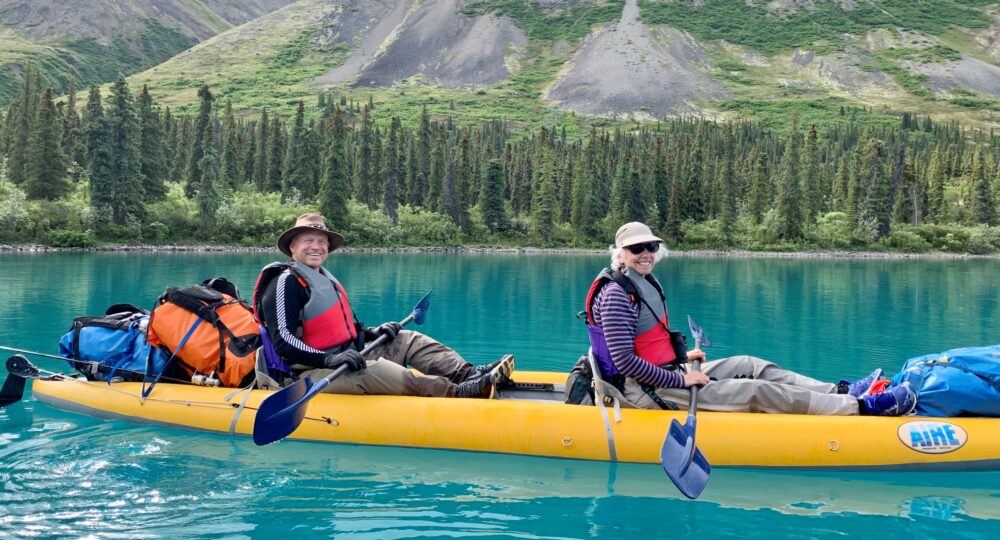
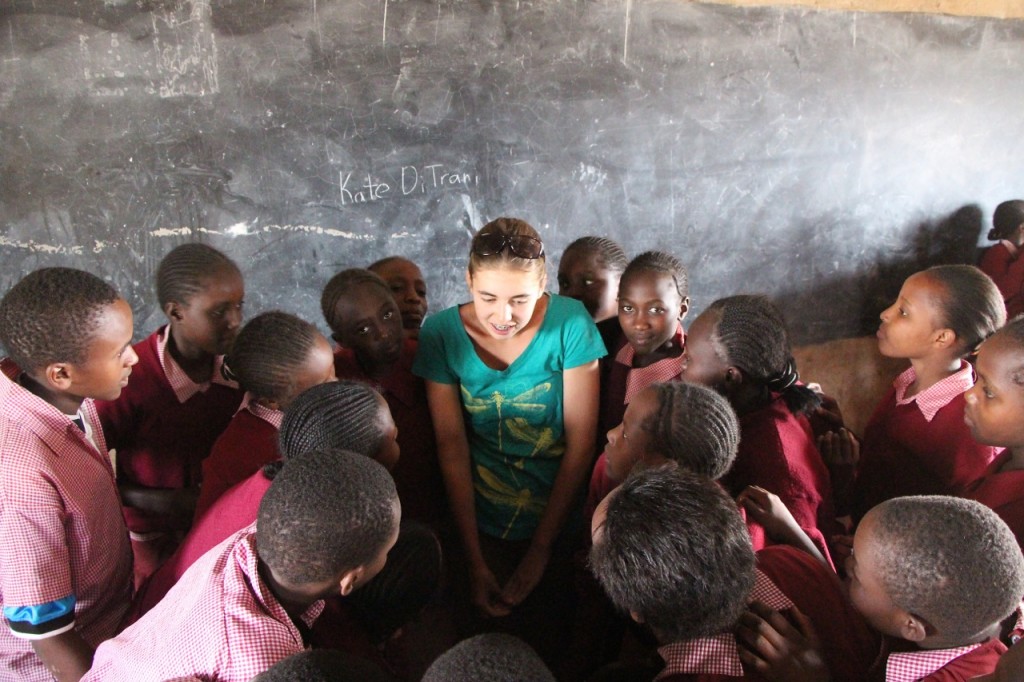
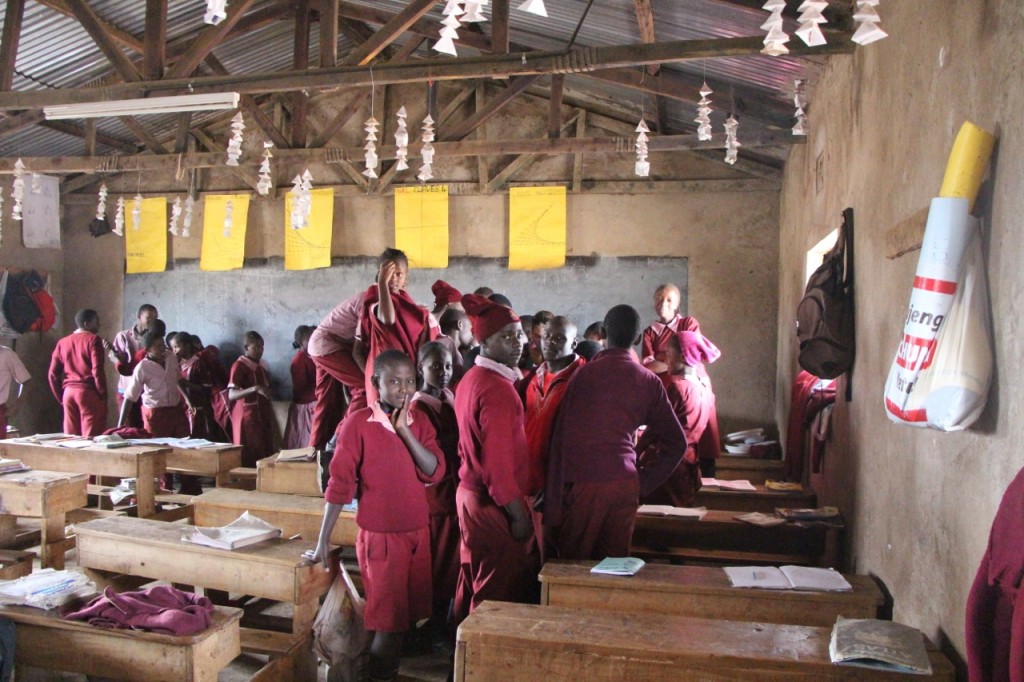
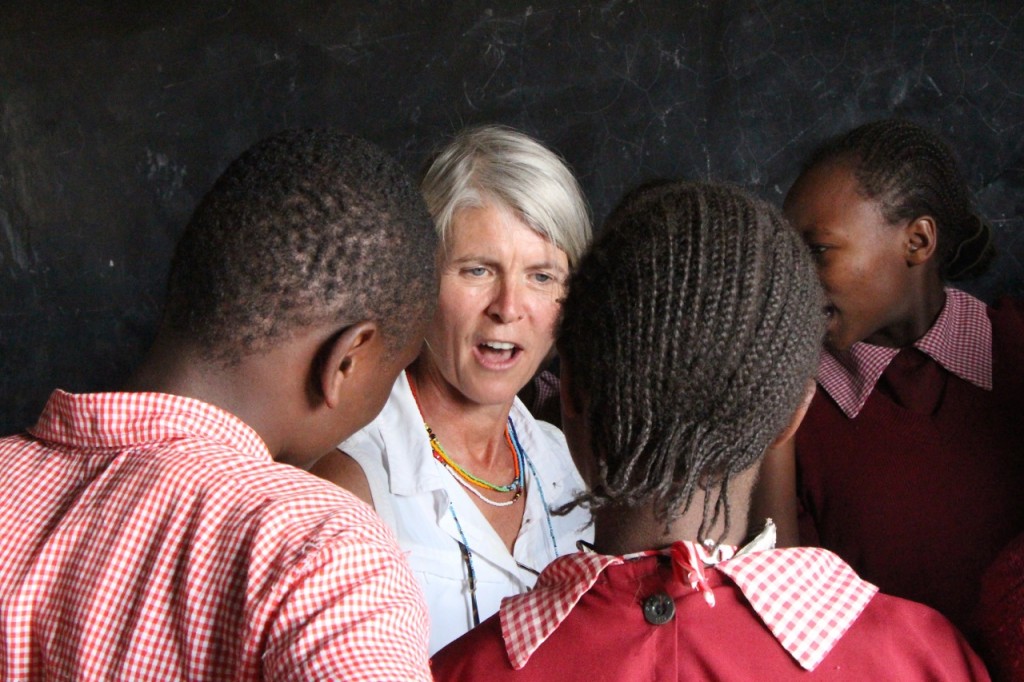
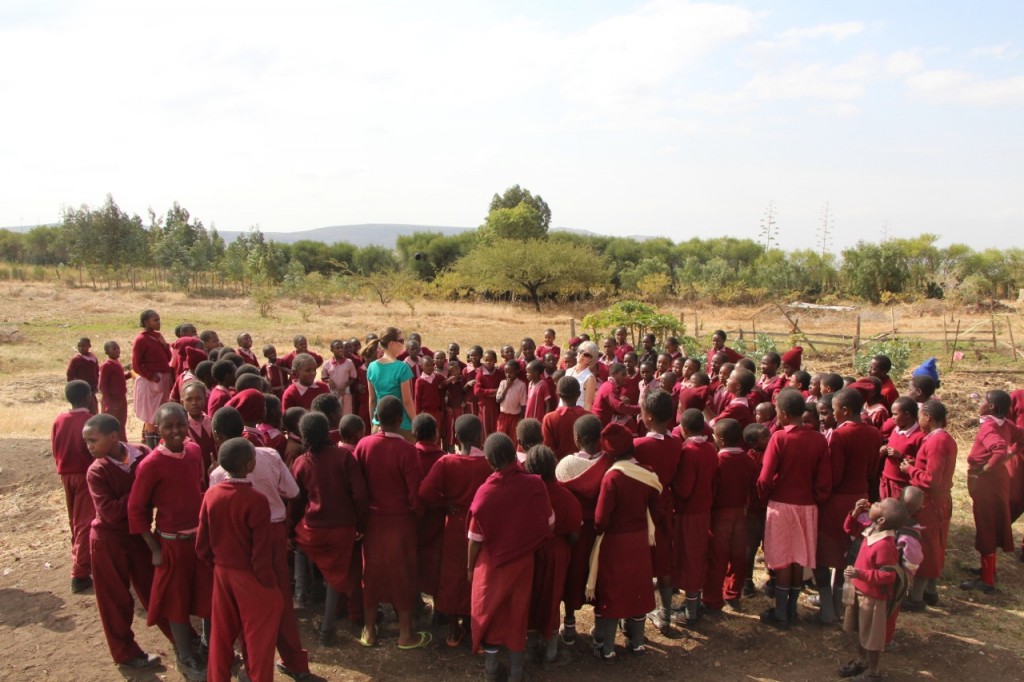
Well said. No doubt the children at the school talked about the visitors to their school long after you left. Thanks for sharing.
Wonderful!